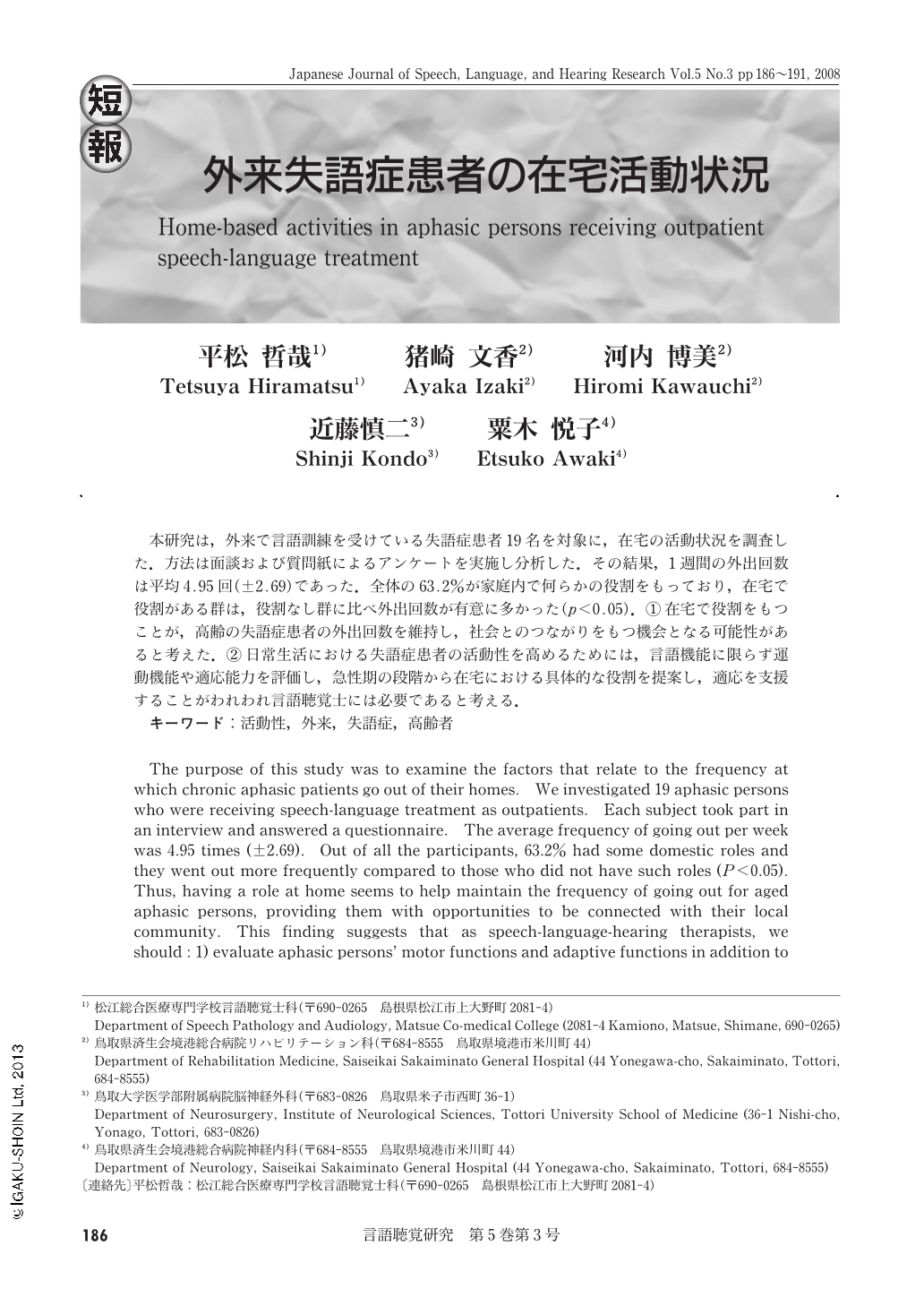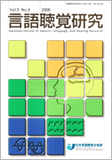Japanese
English
- 有料閲覧
- Abstract 文献概要
- 1ページ目 Look Inside
- 参考文献 Reference
本研究は,外来で言語訓練を受けている失語症患者19名を対象に,在宅の活動状況を調査した.方法は面談および質問紙によるアンケートを実施し分析した.その結果,1週間の外出回数は平均4.95回(±2.69)であった.全体の63.2%が家庭内で何らかの役割をもっており,在宅で役割がある群は,役割なし群に比べ外出回数が有意に多かった(p<0.05).①在宅で役割をもつことが,高齢の失語症患者の外出回数を維持し,社会とのつながりをもつ機会となる可能性があると考えた.②日常生活における失語症患者の活動性を高めるためには,言語機能に限らず運動機能や適応能力を評価し,急性期の段階から在宅における具体的な役割を提案し,適応を支援することがわれわれ言語聴覚士には必要であると考える.
The purpose of this study was to examine the factors that relate to the frequency at which chronic aphasic patients go out of their homes. We investigated 19 aphasic persons who were receiving speech-language treatment as outpatients. Each subject took part in an interview and answered a questionnaire. The average frequency of going out per week was 4.95 times (±2.69). Out of all the participants, 63.2% had some domestic roles and they went out more frequently compared to those who did not have such roles (P<0.05). Thus, having a role at home seems to help maintain the frequency of going out for aged aphasic persons, providing them with opportunities to be connected with their local community. This finding suggests that as speech-language-hearing therapists, we should:1) evaluate aphasic persons' motor functions and adaptive functions in addition to their speech and language functions;2) propose a concrete role at home from the acute stage, and;3) support their adjustment to daily life.

Copyright © 2008, Japanese Association of Speech-Language-Hearing Therapists. All rights reserved.


